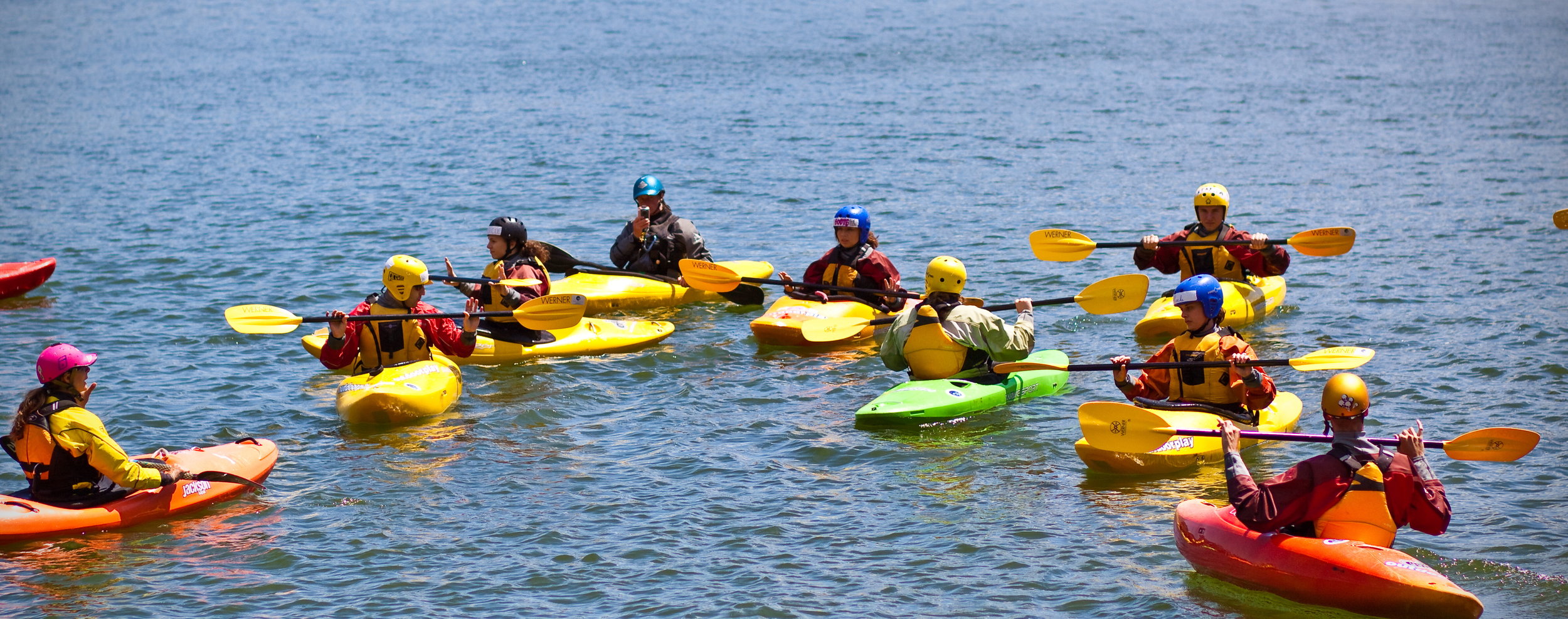The World According to The American Canoe Association
Photo credit: ACA
Outdoor Alliance is a coalition of groups that represent human-powered outdoor recreation across the country. Paddlers, hikers, climbers, mountain bikers, and backcountry skiers come together to protect the places they care about. Our new blog series looks at how each of these groups is looking at public lands today, what they think are the biggest threats, what people who love the outdoors are doing well, and where we go from here.
Founded in 1880, The American Canoe Association (ACA) is a national nonprofit organization serving the broader paddling public by providing education related to all aspects of paddling; stewardship support to help protect paddling environments; and sanctioning of programs and events to promote paddlesport competition, exploration and recreation.
How did ACA get started?
The ACA started in 1880 on the shores of Lake George in upstate New York. The original mission was the simple promotion of canoeing. The organization evolved through the twentieth century, and we are now a national nonprofit organization serving the broader paddling by providing education related to all aspects of paddling; stewardship support to help protect paddling environments; and sanctioning of programs and events to promote paddlesport competition, exploration and recreation. We are the National Governing Body for paddlesports for the U.S. Olympic Committee, and our instructional programs, first formalized in 1973, are recognized worldwide as the standard in paddlesport instruction.
Photo credit: ACA
For ACA, what are the biggest public lands/water policy issues?
Currently, threats to the Boundary Waters Canoe Wilderness are at the heart of our biggest public policy concerns. The Boundary Waters is an iconic paddling wilderness currently threatened by sulfide-ore copper mining. Industrial mines on the edge of the Boundary Waters and the resulting pollution from these mines will flow directly into the Boundary Waters. The threats from pollution would be long lasting, and increase over time as the number of proposed mining sites increases. Ultimately, this presents a threat to wilderness paddling opportunities, and the local tourism industry which generates close to a billion dollars in annual economic benefits for northeastern Minnesota. We are working hard to keep our members updated on the latest developments and provide every opportunity for our member base to comment as the situation evolves.
What’s a recent success for ACA?
Most recently, the ACA advocated to the Tennessee Wildlife Resources Agency for the inclusion of the Tennessee paddling community, including liveries and outfitters of varying size, on an advisory board comprised of various river user groups, including trout fishermen, that will make recommendations for permitting on Tennessee Rivers. This is a prime example of the kind of local policy work where the ACA engages to make a difference. These kinds of regulations can have far reaching impact on not only access, but the economic viability of small paddling businesses that support the economic fabric of a community. The ACA works hard to ensure that paddlers have adequate representation in these kinds of local and regional matters.
What’s one of your inspirations for protecting paddling?
Photo credit: Brett Mayer
Paddling can be a practice that supports personal growth and transformation. I studied paddling culture through an academic lens, and found that over time, the paddling experience leaves people with a deep sense of gratitude and appreciation for the experience, the community, and ultimately the rivers, lakes and lands through which they flow. I believe the work I am doing helps protect the places where connection is built, to self and to other, and these kinds of connections are invaluable in a world where increasing human activity and pressure on resources of all kinds, poses a threat to the vitality of all. Paddlesports matter because these experiences serve as opportunities for growth and connection. Ultimately, a greater sense of stewardship and responsibility can emerge through time. Protecting the waters on which we paddle is tantamount to protecting the importance of the experience itself.
What do you think the future of public lands and waters looks like?
In recent years, numerous threats to public lands have emerged. These threats move beyond traditional issues such as lack of funding, fire management, invasive species etc., and present a new kind of danger, one that questions the American idea of publics lands that we have enjoyed since the days of Muir and Pinchot. Ultimately, the inclusion of the American public in how public lands and rivers are accessed and managed is at risk. I think the future depends greatly on the willingness of the public to voice their opinions, concerns, and most importantly to care. It also depends greatly on different user groups finding common ground and coming together for the greater good of ensuring that all Americans maintain access and a voice in the protection and management of lands and rivers that are commonly shared.
“Ultimately, the inclusion of the American public in how public lands and rivers are accessed and managed is at risk. ”
What’s the most important thing that paddlers need to know about how to make a difference?
Paddlers can make a big difference by building strong coalitions of individuals who care about how their local resources are managed and accessed. This is where progress starts. Paddlers need to pay attention to local issues, form an opinion, and communicate with other paddlers. When these kinds of grassroots efforts are robust, our ability to communicate the value of what we want and need for our communities and water resources to thrive is more sophisticated and ultimately more impactful. In 2015 the ACA started our State Director program. As we move forward, one of our hopes is to increasingly leverage this system toward better identifying and communicating about important local issues. This kind of work honors the needs of local paddling communities and helps knit the fabric of our national level policy work.



